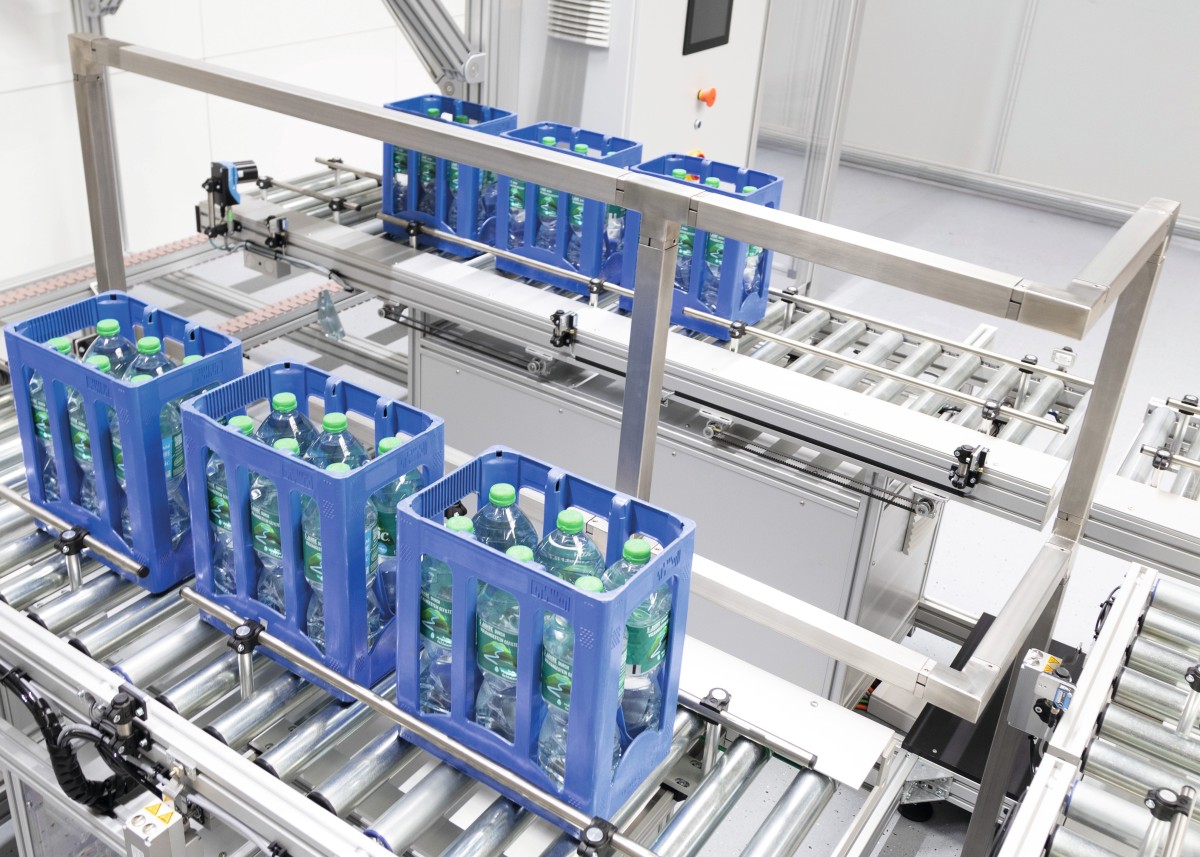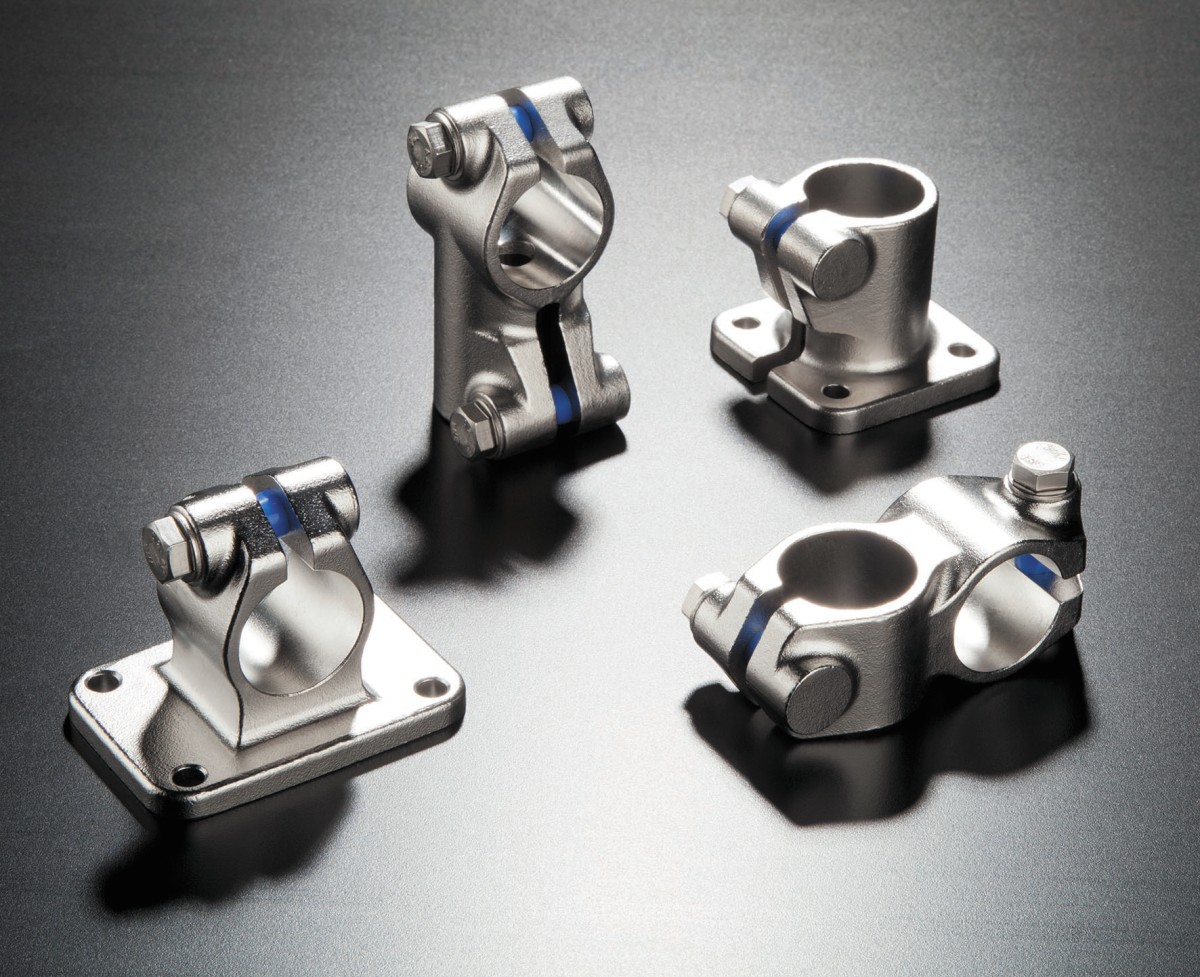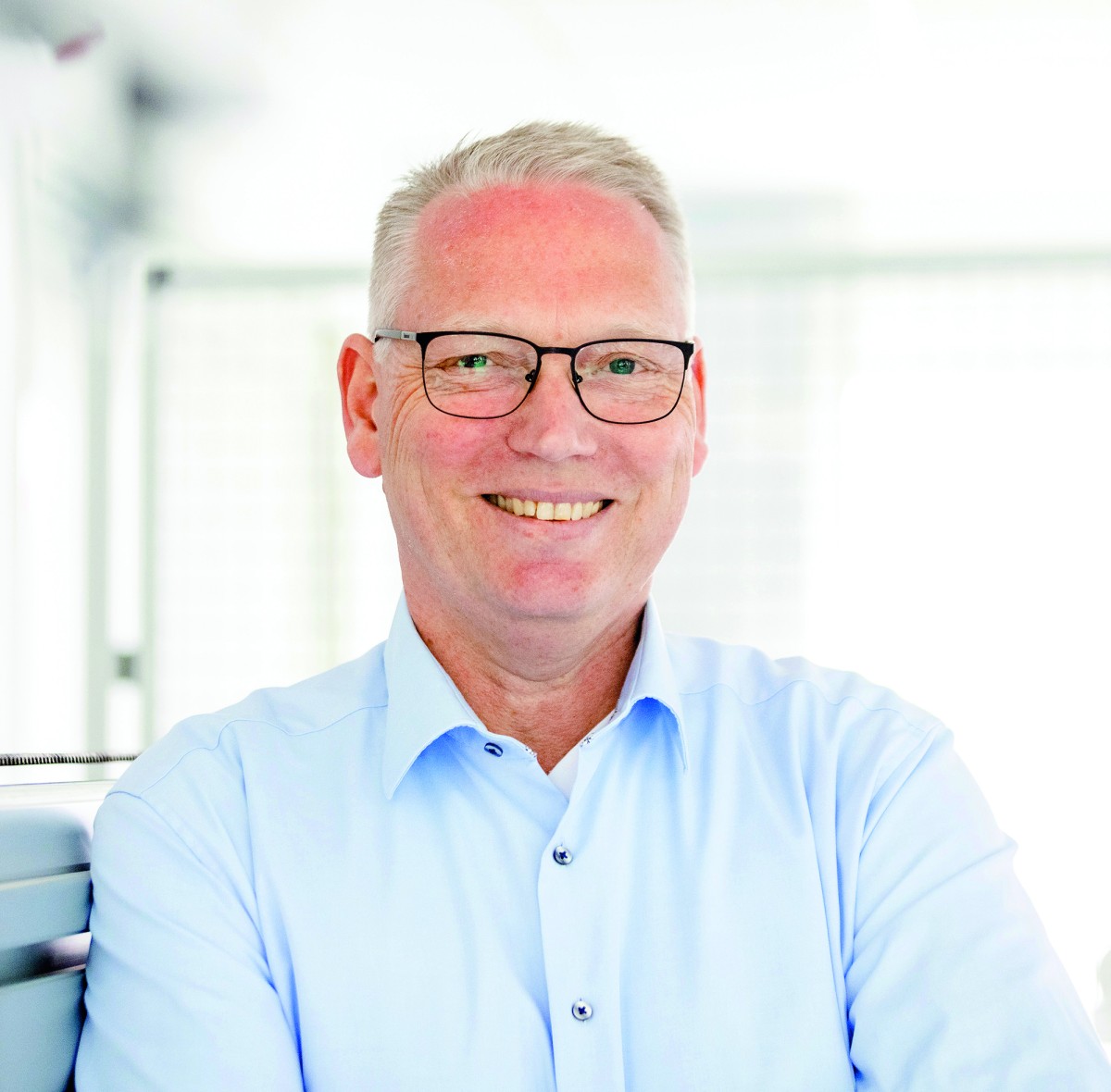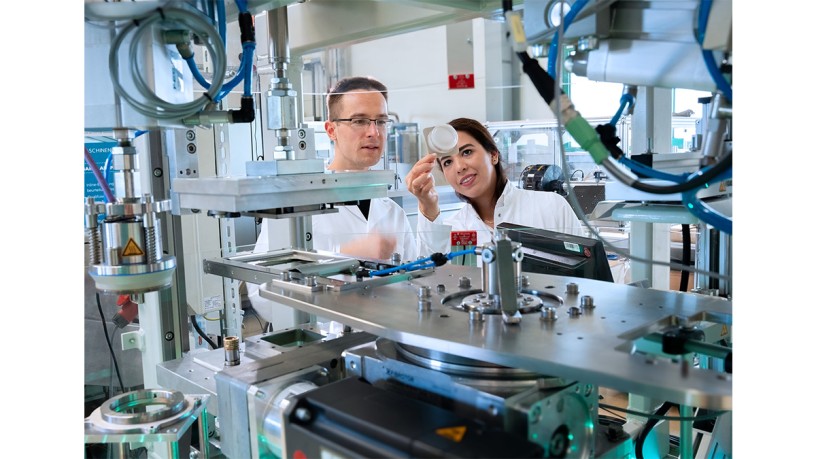Hygienic Piping Systems
Cleanroom technology as a hygiene standard
Cleanrooms enable the controlled production and processing of food under particle-free conditions. The cleanliness of the environment is crucial, especially during sensitive production steps such as filling and packaging or in conveyor systems. If dust, abrasion or other contaminants get into the product, this can not only reduce quality but can also lead to expensive product recalls. As a result, cleanroom technology has become standard in many areas of the food industry.
Structural measures such as airlocks, filter systems and controlled air flow form the basis. However, every component within the cleanroom must also be selected with care – especially the carrier systems, brackets and connecting elements, which are often in direct contact with the production line.
Stainless steel is the primary material used in cleanrooms. Its high resistance to chemicals and cleaning agents, low surface roughness and corrosion resistance make it the first choice in sensitive production areas. "However, it is not only the material itself that is crucial, but also its processing and geometry," explains Björn Riechers, Managing Director of RK Rose+Krieger.
The company provides a good example of this with its modular assembly system for cleanroom environments. All stainless steel components used – whether pipes, connecting elements or clamping elements – are designed with hygiene in mind. They feature smooth transitions, no unnecessary edges, large cleaning openings and blind hole designs to prevent particle deposits. "For transport through locks, all components are properly cleaned and double-packed in airtight packaging – a detail that is often overlooked but essential for particle protection," adds Riechers.
Challenges in cleanroom practice
In many production facilities, carrier systems consist of welded stainless steel frames. However, this design has significant disadvantages: The tubes must be precisely cut to size, welded, ground, pickled and then polished – a time-consuming and costly process. In addition, welded frames are difficult to transport through clean room locks. Welding is not permitted in the clean room itself.
Another problem is the lack of flexibility: Modifications or extensions to existing frames are virtually impossible or very costly. And last but not least, weld seams or machining marks create areas that are difficult to access and represent potential sources of dirt – a clear violation of the principles of hygienic design.

©RK Rose+Krieger
Modular stainless steel system solutions
To overcome these challenges, RK Rose+Krieger has developed two product lines, the EMS stainless steel mounting system and Robust Clamps, which are specially tailored for use in cleanrooms and wherever stainless steel is used as a material.
1. Stainless steel mounting system EMS
The EMS system is based on connecting elements made entirely of stainless steel, which are combined with stainless steel pipes cut to length using innovative clamping technology. Assembly requires few tools – just a hexagon socket wrench – and can be carried out by personnel without special training. The system supports both square and round pipes in standard sizes (e.g. 40 mm).
The clamping technology is at the heart of the system:
- In round pipes, two half-shells inside the pipe ensure centred four-point contact.
- In square pipes, two identical half-shells rotated by 180° create six contact surfaces through intelligent diagonal tensioning. This technology compensates for tolerances of up to 2 mm and reliably prevents the connection from "wobbling" or coming loose. After mounting, the connection points can be sealed with covers made of food-safe plastic if required.
- The available connection types (corner, T-shaped, cross-shaped and 3-way clamps as well as base elements with drain holes) cover almost all frame requirements – even for environments that are susceptible to corrosion or require wet cleaning.
2. Robust Clamps for heavy loads
For applications with high mechanical loads – such as in conveyor technology – RK Rose+Krieger offers the Robust Clamps series of stainless steel clamps. "These elements can also be installed without special tools, but offer additional stability for shock-proof or heavy-duty applications," emphasises the managing director.
Special attention is paid to the surface finish: Large slots, smooth transitions and blind hole designs prevent dirt accumulation. The external screws greatly simplify installation. Variants such as flange, angle, foot or cross clamping pieces are available in sizes between 12 and 50 mm.
Modular Best Practices
The interplay of material, design and system architecture ensures that RK Rose+Krieger systems are easy to clean, adapt and expand – without interrupting operations or having to manufacture completely new frames. The fact that every connecting element can be dismantled means that even temporary structures can be realised in cleanrooms – a feature that is particularly sought after for frequently changing production processes or audit requirements.
The integration of drain holes in EMS base elements also ensures that no liquid remains in the components during cleaning processes. Practical experience shows that these details shorten cleaning cycles, reduce downtime and ensure that hygiene standards are maintained in the long term.

©RK Rose+Krieger
Future prospects in cleanroom technology
The coming years will see clear developments towards digitalisation and automation. Modularity alone will no longer suffice in the future. Connection systems must be able to integrate intelligently into digital production systems. For example, through sensor-monitored components or digital planning and configuration interfaces.
Thanks to its modular system with over 6,500 catalogue items, decades of experience and close customer support, RK Rose+Krieger is able to design customised cleanroom solutions that meet not only today's requirements but also those of the future, adds Riechers. As a subsidiary of the globally active Phoenix Mecano AG, the company benefits from internationally gathered expertise in product development and system architecture.
In the food industry, the quality of cleanroom technology is increasingly decisive for product safety and competitiveness. RK Rose+Krieger systems – in particular the EMS system and Robust Clamps – offer a practical, hygienic and flexible alternative to traditional designs. They enable clean, modular and durable solutions that meet the demanding requirements of modern cleanroom environments – today and in the future.
For additional information:
Björn Riechers, Managing Director of RK Rose+Krieger
RK Rose+Krieger GmbH – Connecting and Positioning Systems
Potsdamer Str. 9
32423 Minden, Germany
E-Mail:
info@rk-online.de
https://www.rk-rose-krieger.com/




